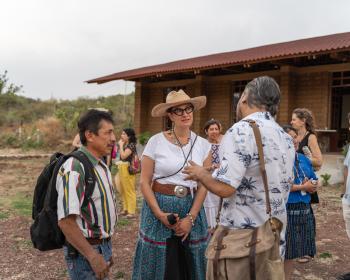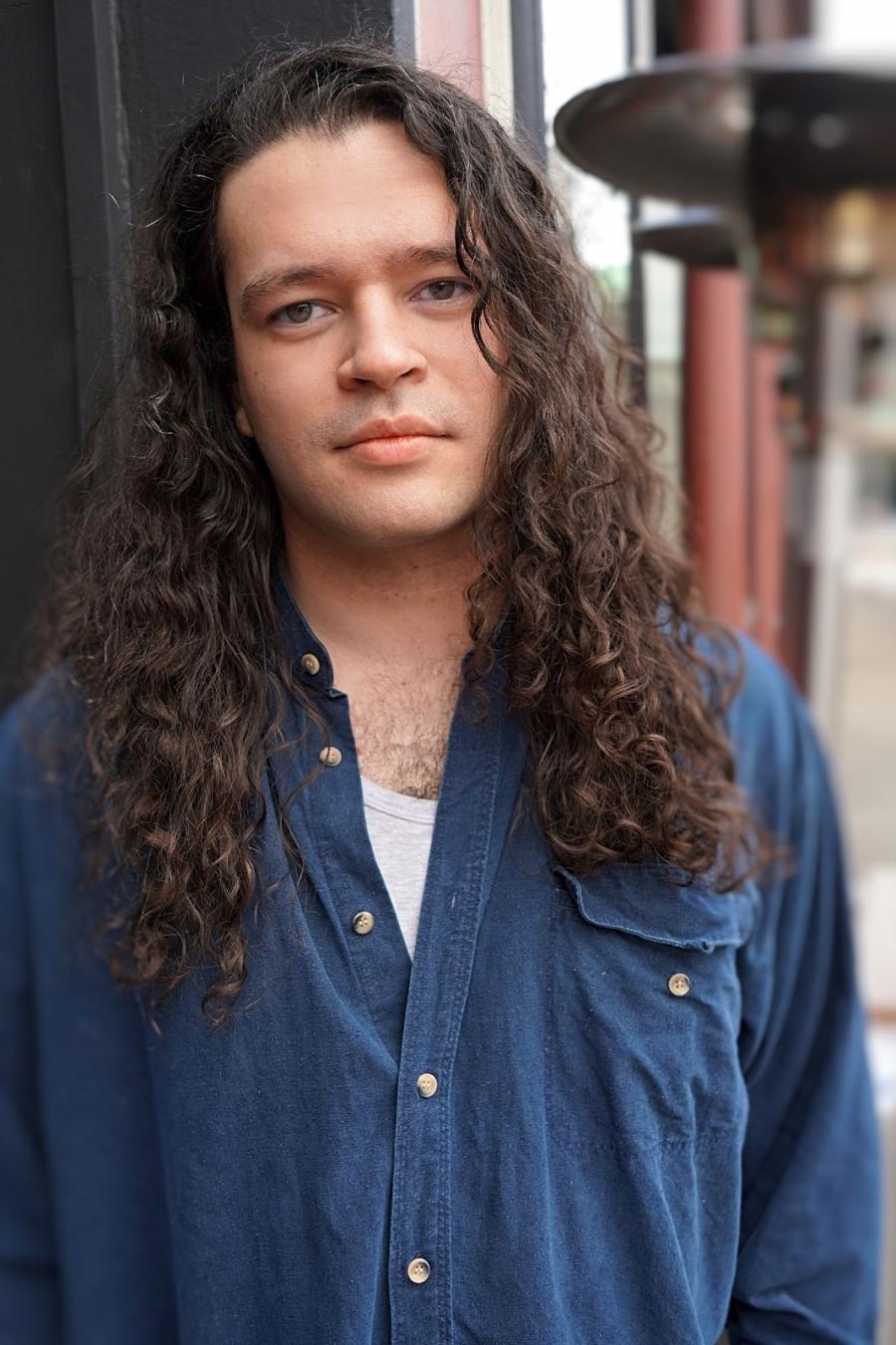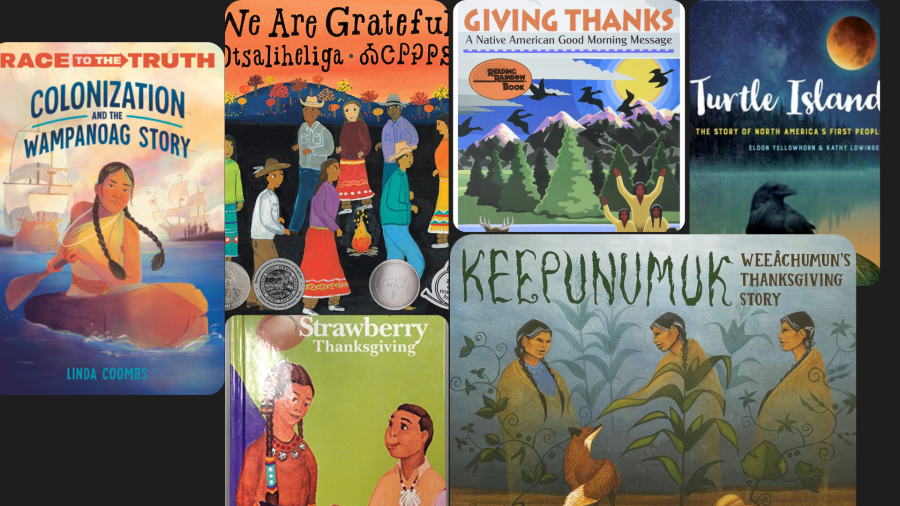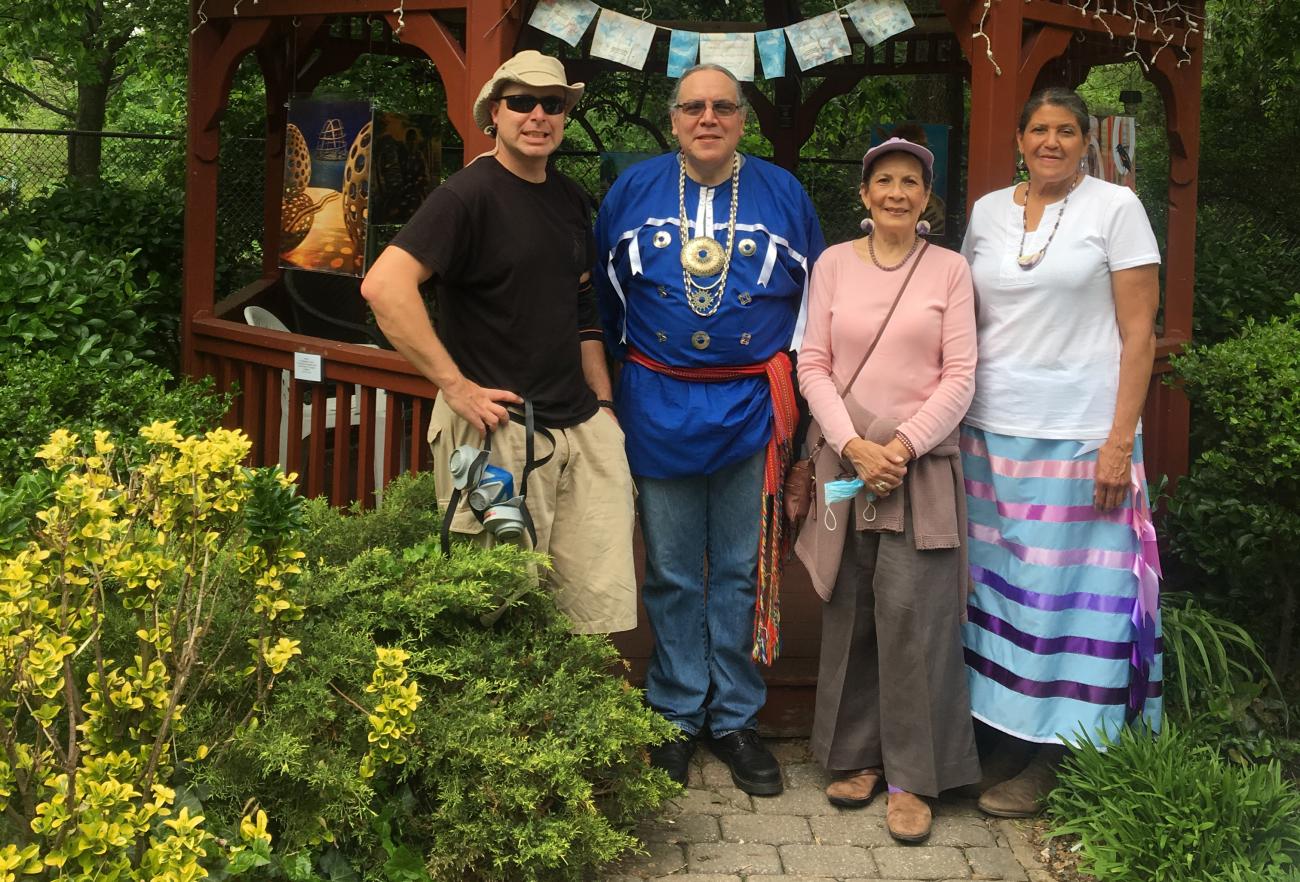
By Phoebe Farris
Imagine spending the third Sunday of the months May, June, July, and August in a quiet garden oasis filled with plants, trees, flowers, a gazebo gallery full of art works by Native American artists, and a free lunch buffet offering indigenous dishes such as corn, beans and squash casseroles, corn bread, berry puddings, johnny cakes, clam chowder, and spring water, all at the top of a hill in upper Manhattan, so far up that the sounds of the subway, buses, and rushing people are totally absent.
That was the atmosphere in Bruce's Garden, Isham Park where artist, author, curator, educator Nadema Agard (Powhatan) presented her 2018 summer series, “Manahatta Revisited: 21st Century Algonquin Country,” an educational series by Algonquin Nation visual, performing and literary artists, educators, historians, leaders, elders, and horticulturalist. As Director of Red Earth Studio Consulting/Productions, Agard’s proposal was funded with the support of Partnerships for Parks Inwood Parks Grant made possible by Columbia University.
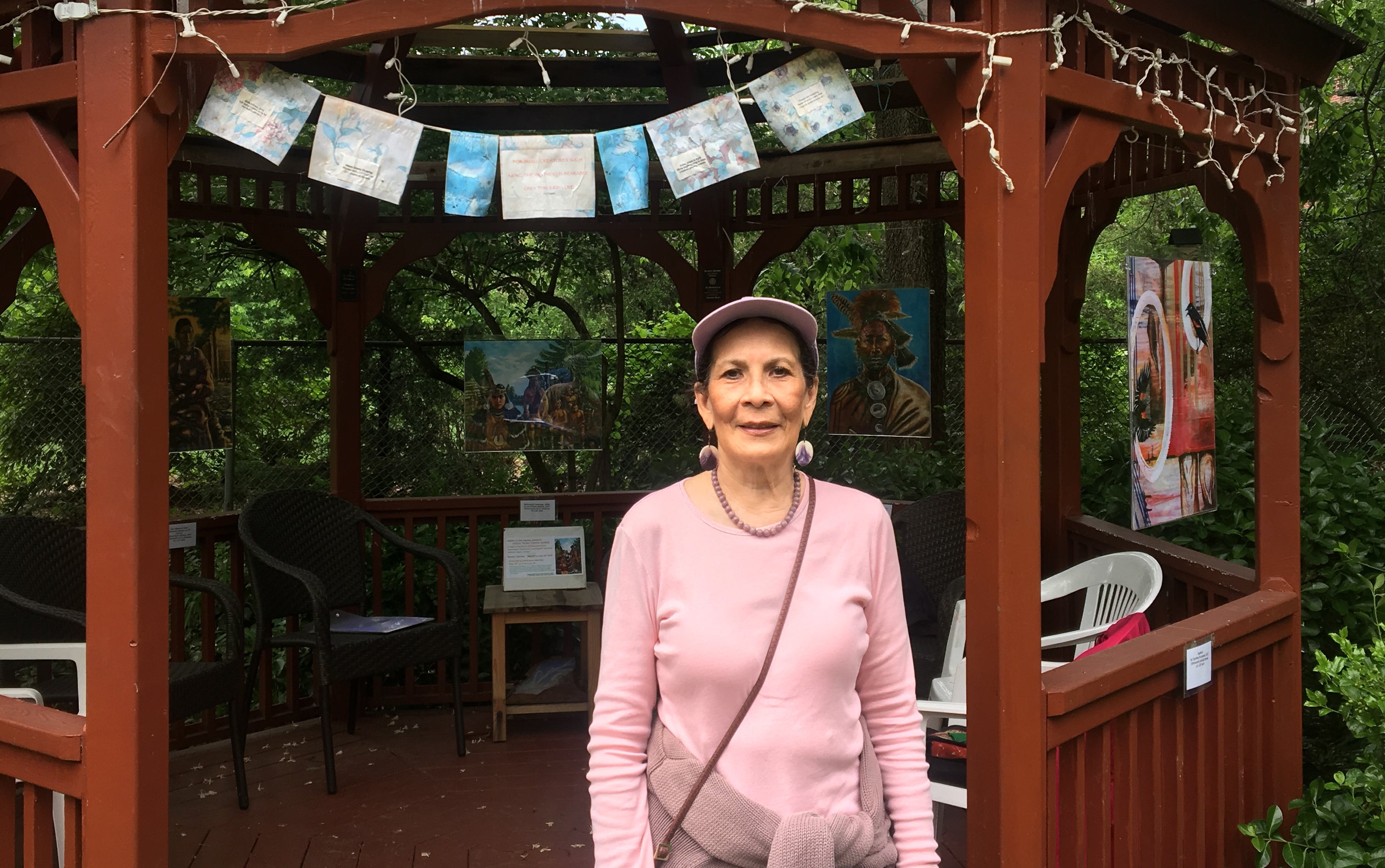
Nadema Agard (Powhatan) standing in front of the park Gazebo.
The first event on Sunday May 20, 2018, featured the topics, "People of the Wampum” and “Traditional/Contemporary Algonquin Nation Arts and Symbolism & Native New York Artists”, a cultural art talk by David Bunn Martine (Shinnecock) and “Survival as Tradition: Algonquin Nation," arts demonstrations by Josephine Smith (Shinnecock) and Matauqus Tarrant (Shinnecock).
David Bunn Martine explained some of the Shinnecock’s history, stating “the linguistics discipline categorizes our Tribe as Algonquin based on our Algonquian language, lifestyle, traditions, and customs, mainly harvesting the sea and dealing with sea boundaries and whales which began during the Paleolithic period approximately ten to twelve thousand years ago. Our origins were informed by the Wisconsin glacier that pushed Long Island in front of it, the glacier pushed us and the land into an outwashed plain that is now Long Island.”
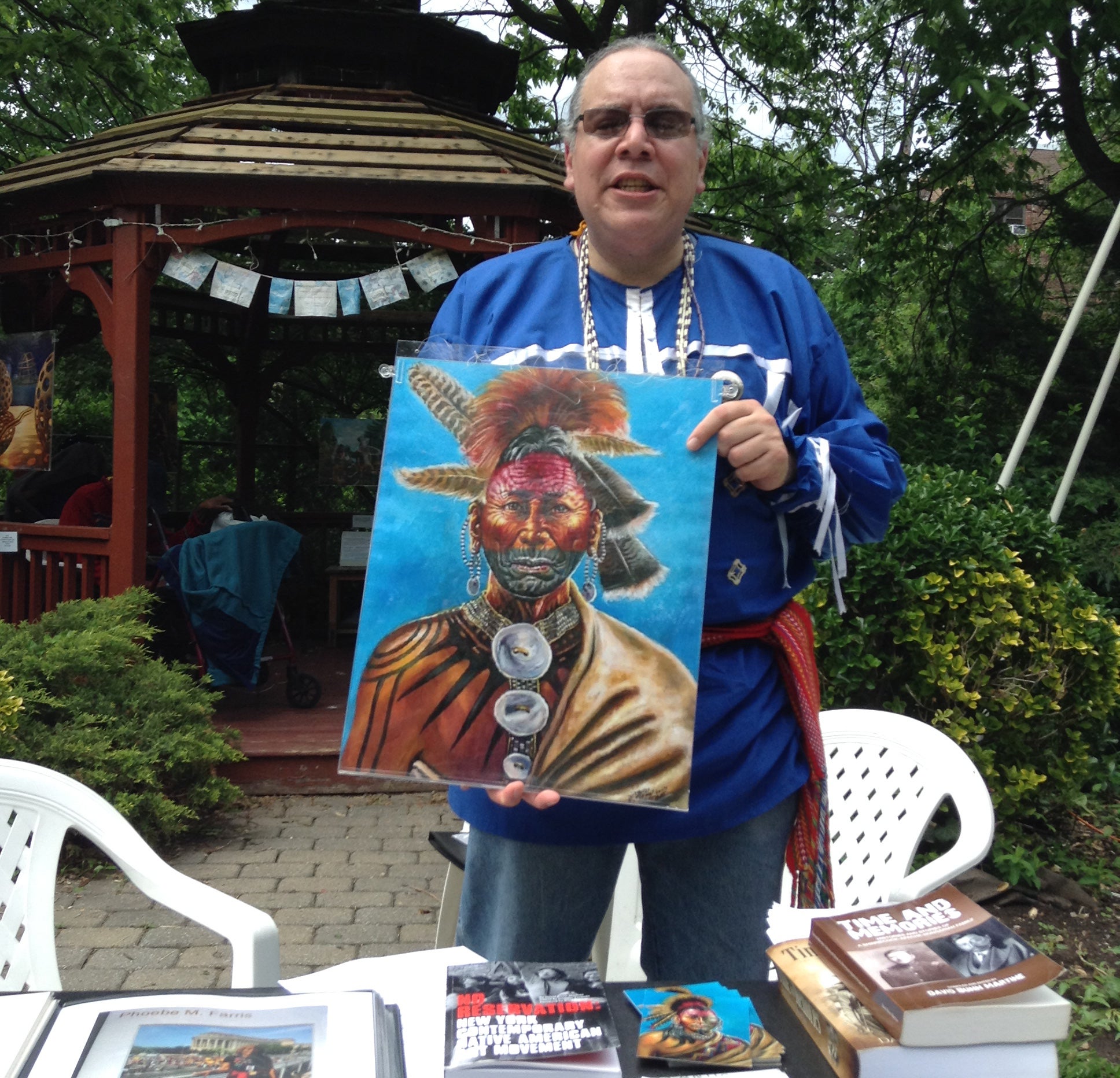
David Martine (Shinnecock) holding his painting Wyandanch, Montauk Sachem.
Having in recent years received a Joan Mitchell award, an Andy Warhol Research Fellowship, and a Robert Rauschenberg Residency, David Martine has diversified his artistic interests. Currently, he is the Director/Curator of the Shinnecock Nation Cultural Center and Museum and also Chairperson of AMERINDA, American Indian Artists, Inc. Martine discussed his recent book, No Reservation: New York Contemporary Native American Art Movement and showed examples of works highlighted in the book as well as prints of other Native artists with Algonquin heritage. On display in the gazebo were 16x20“ prints of Martine’s oil on masonite paintings. Particularly striking to many guests was,”Wyandanch, Montauk Sachem,” an historical figure from another Long Island Tribe with ties to the Shinnecocks. Wyandanch’s piercing eyes are striking and full of emotion and his painted bronze skin and regalia stand out against a clear blue sky. Other historical themed paintings also completed in 2007 and on display were,”Shinnecock Ceremony,1600’s”, “Late Afternoon Rest: Shinnecock Woman of 18th Century” and “Indian Man, 1700’s.”
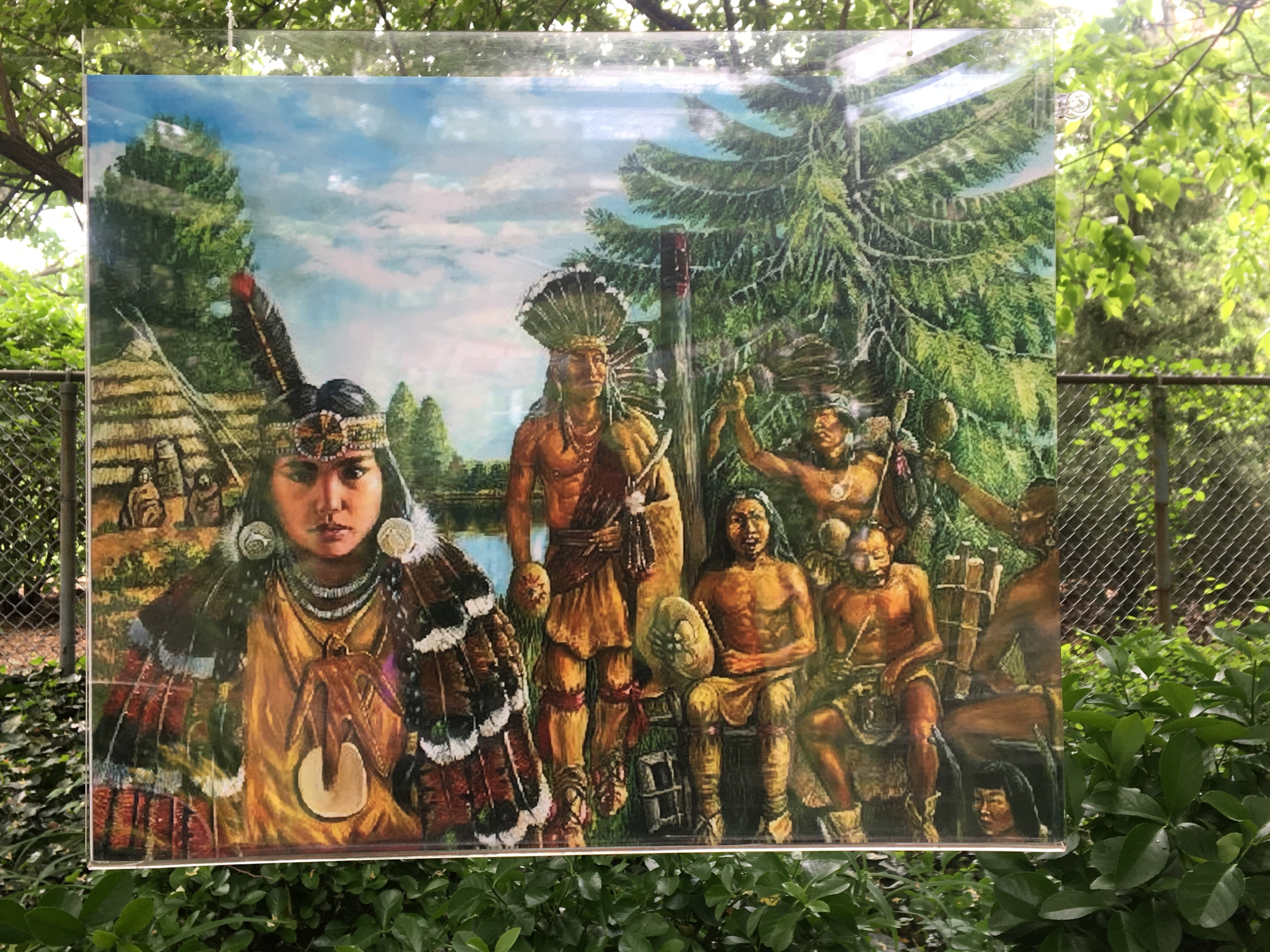
Late Afternoon Rest: Shinnecock Woman of 18th Century by David Martine.
Martine also discussed an exhibit he curated that was currently on display. "Recovering Memories: Vernacular Photography from the Historical Native American Brooklyn Neighborhoods” on view at the Wilmer Jennings Gallery at Kenkeleba featured loaned family and press photos of Indians who lived in Cobble Hill and Boerum Hill during the 1940’s-1960’s.
High steel workers, stage performers, artisans, and homemakers were honored. The families of Muriel Miguel and Marguerite and Josephine Smith, presenters in the summer series were prominently highlighted. Also on display on the grounds of Bruce’s Garden, Isham Park was wampum jewelry designed by Shinnecock craftsman Matauqus Tarrant. Tools needed to make jewelry and other cultural items were laid out so visitors could experiment with them while watching Matauqus in action.
Throughout the afternoon Josephine Smith worked on a woven basket, inviting guests to assist her and provided examples of finished basketry for handling and viewing. Josephine Smith is the Director of the Shinnecock Nation Cultural Resources Department and is the culture and language instructor for the Shinnecock Indian Education Program. She is also the owner/ operator of Hands of Tradition, a Native business specializing in handmade regalia and accessories, jewelry, crafts, native foods, and cultural presentations. For over forty years Smith has shared her Native cultural expertise at institutions throughout the U.S., stating that “Our culture will never die, as long as one person remembers, as long as one person teaches, as long as one person continues living our traditions.”

Josephine Smith (Shinnecock) and her basketry presentation.
Series Stories:
Expressions to Creator: Music, Song and Dance: June 17, 2018
The Plants Are Our Relatives: Corn, Beans and Squash, The Three Sisters: August 19, 2018
-- Phoebe Farris, Ph.D. (Powhatan-Pamunkey) is a Purdue University Professor Emerita, photographer, and freelance arts critic based in NJ, NY, and Washington D.C.
Top photo: Left to right, Matauqus Tarrant (Shinnecock), David Martine (Shinnecock), Nadema Agard (Powhatan) and Josephine Smith (Shinnecock) in front of the gazebo in Bruce's Garden in Isham Park.
